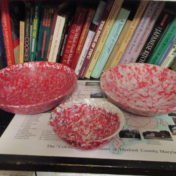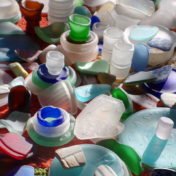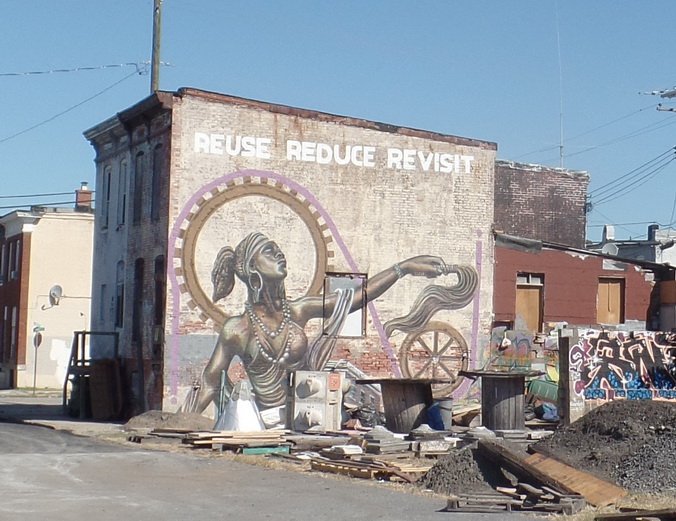Cucumber tart & five other ways to use up all those garden cucumbers
My secret weapon in the battle against spotted lanternflies.
Now You’re Cooking with Soy
Happy St. Joseph’s Day!
Patching a shredded arm chair
Are you down with HDPE?

High density polyethylene (HDPE), the plastic used to make milk jugs and other food safe containers, is the most commonly recycled and ecologically friendly of all plastics. Help keep HDPE out of the landfill and learn how you can recycle HDPE at home to make bowls, cutting boards and just about anything else you can think of.
Gallery of Wood Bowls

Wood Turning is a long term hobby of mine. I like to make functional objects, such as bowls, using discarded logs rather than purchased lumber. Wood bowls, when properly cared for can last hundreds of years. When we lived in DC I sometimes sold them, now I occasionally give them away as gifts. Here are some of the ones I’ve kept for myself.
Earth Day 2020: What the pandemic can teach us

Joe, myself and our cats are together at home these days, like most people are, under a “shelter in place” order, waiting for the number of new Coronavirus cases to subside and for widespread testing to be put into place. Since today is Earth Day (and this will surely be the most unusual Earth Day of the past 50) I… Read more »
Raised garden beds from reused roofing
What does a doughnut have to do with climate change?

In early 2020 the effects of 1°C climate change are many; unprecedented wildfires, the second lowest amount of Arctic sea ice on record, and a winter that barely arrived. To avoid even larger impacts, the international community has set a goal of reducing carbon emissions to limit warming to 1.5°C, yet we are not on track to achieve this. The… Read more »
Turn broken glass into sea glass

I tend to find a lot of cool old bottles when walking in the woods. Unfortunately, the best ones are usually broken. I don’t like to leave broken glass just sitting around, so I try to take it with me, when possible. It seems like a waste to recycle antique bottles, and the broken ones aren’t really recyclable, so I’ve tried to come up with ways to repurpose them.
Help biodiversity by becoming a citizen scientist

Citizen science initiatives help scientists document biodiversity and ecological relationships at a time when species are disappearing at an alarming rate. Since its inception in 2008, iNaturalist users have mapped when and where more than 250,000 species sightings have occurred. Such data, collected over years can help identify long term trends in biodiversity not always possible by traditional funding.
Sustainability at home
Lately I’ve read many wonderful blog posts on sustainable living and how to go “zero waste”. Zero waste is more of an aspirational than a fully achievable goal, but rethinking habits and decreasing the amount of stuff we throw away is a great way for individuals to begin to reduce their environmental impact. Here are some of the steps we’ve taken… Read more »
The first recyclable toothpaste tube is much more impressive than it sounds

When we think of innovative technology, toothpaste usually isn’t the first thing that comes to mind. But maybe that should change. Lindsay McCormack, CEO and founder of Bite toothpaste bits, has reformulated tooth paste into a tablet. Because these come in glass containers, nothing need ever hit the landfill. For this reason, I personally hope toothpaste tabs kick Proctor and… Read more »
A History of Scrap in America

In November, we visited the Jewish Museum of Maryland which has put together a traveling exhibit called Scrap Yard: Innovators of Recycling that will run through April, 2020. The exhibit tells the story of the scrap industry and also the people who built it up. Scrap collectors were often recent immigrants and other marginalized people, who had few other… Read more »
Today’s Reuse Centers
Old School Joe Opts In

Why a blog? 2019 seems to have marked a turning point in the global climate crisis, or at least in the public’s perception of the issue. About six in ten Americans (62%) say they are at least “somewhat worried” about global warming. More than one in five (23%) are “very worried” (Leiserowitz et al., 2019). Average global temperatures have warmed… Read more »








